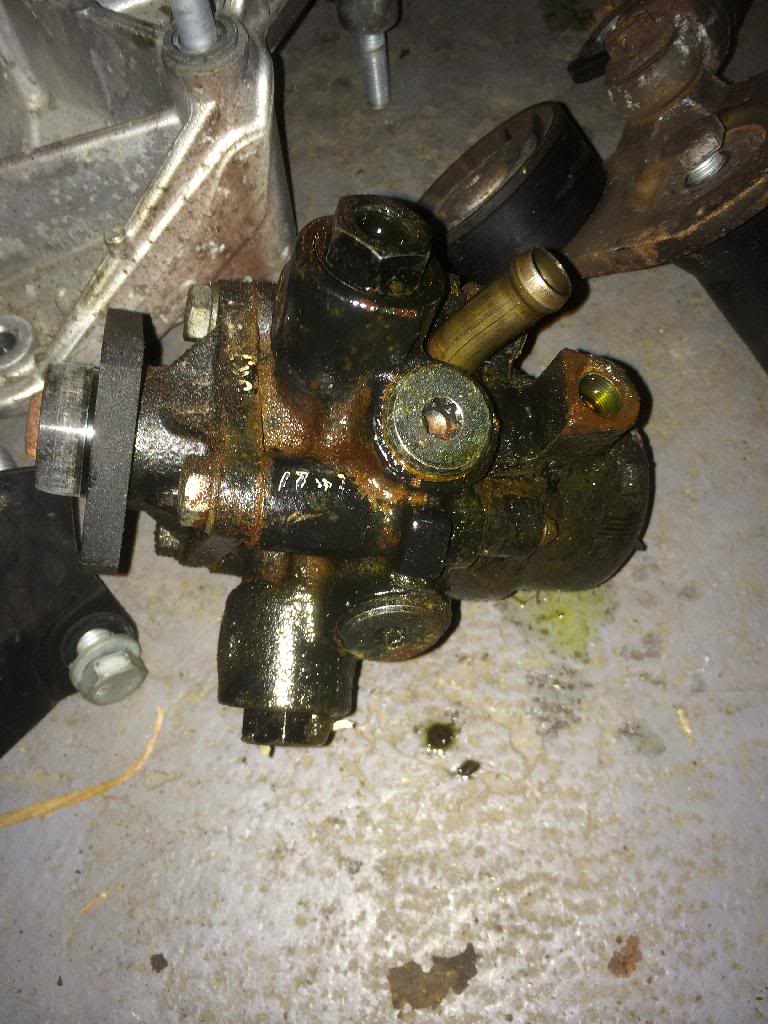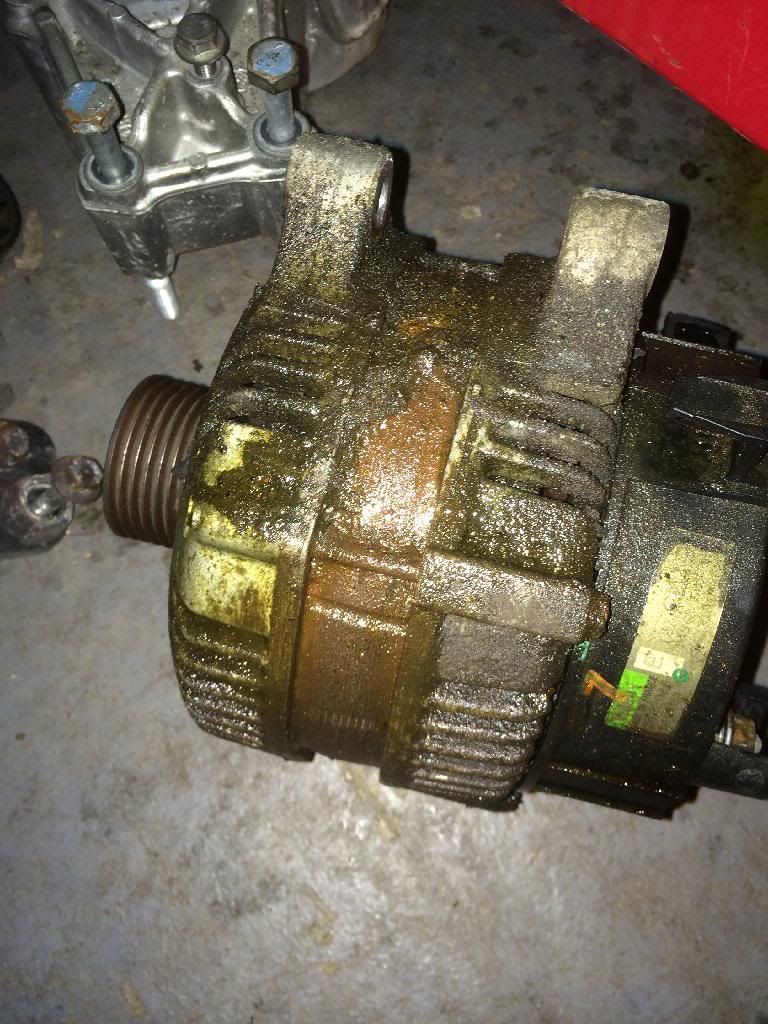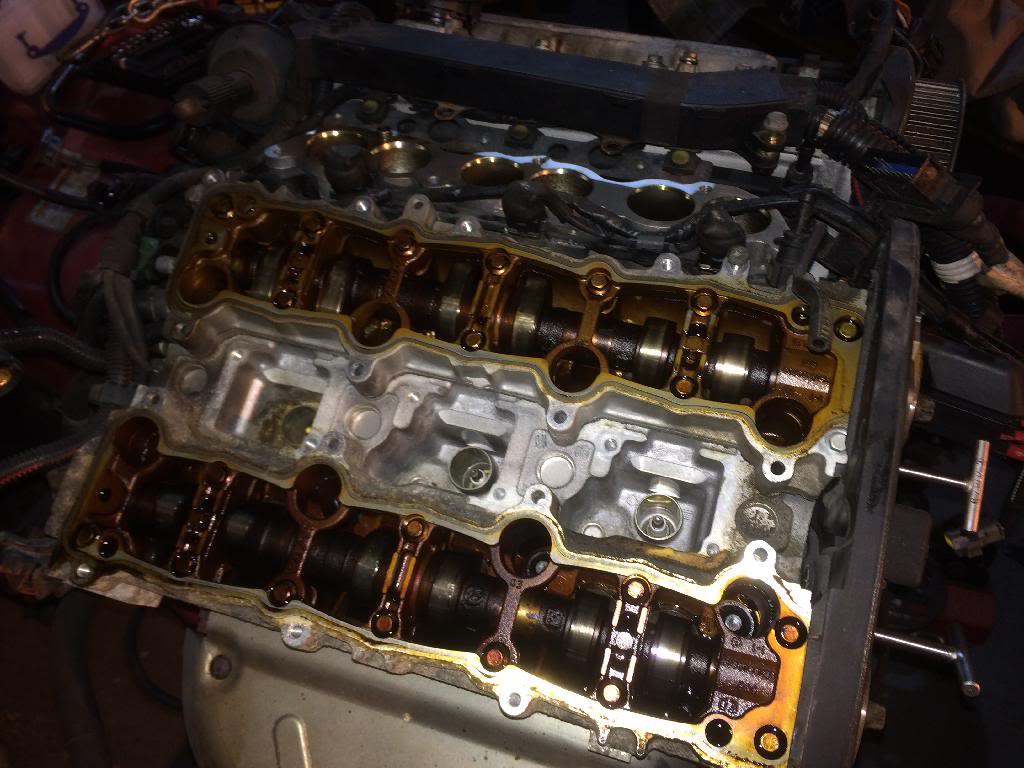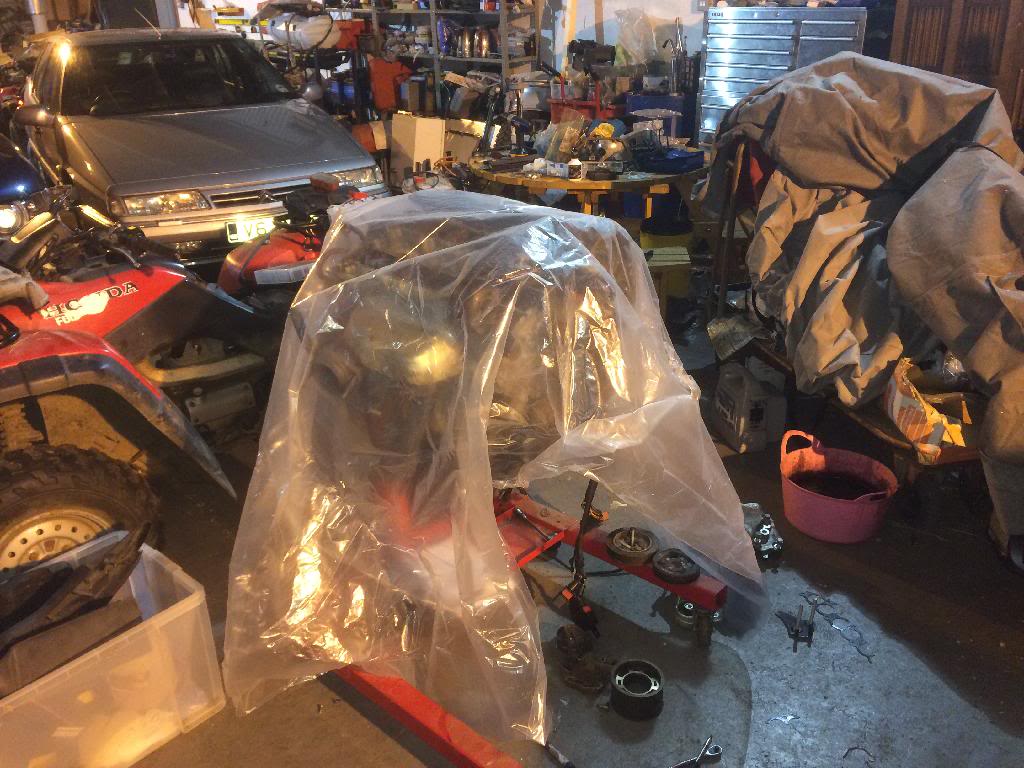DHallworth wrote:It's official now anyway. The Activa is getting it's V6 conversion done the weekend of 7th and 8th June

Really looking forward to it now, I'm like a kid at Christmas!
Fantastic, I would be the same.

Looking forward to a ride in her when she's all done.

Not just to see what a V6 Activa is like, but I'm very curious to see what the ES9J4 is like with a manual gearbox rather than being knobbled by an automatic...
That engine certainly looks quite weathered on the surface - corrosion on the alloy intake runners etc... I guess that's what happens to a car that sits in the weather for nearly a year! I'm sure it will clean up after a bit of work though.
It's quite neat seeing the pictures of the side of the engine when it's out - it really is massive isn't it! (Try to take more pictures during the strip down and overhaul process if you can - its both very interesting and informative

)
I'll have to have a word with you for some advice if/when I come to doing the timing belt on mine...and yes the timing belt rollers on mine are starting to sound quite gritty too, so I'm going to have to do all the rollers.... (and possibly a new crank pulley as well if the squeak on cold start-up is the rubber on that starting to let go)
How far are you planning to strip the engine down ? I'm guessing camshafts out to seal under the cam boxes ? Again some pictures would be really nice if you have those out... I'm still trying to work out in my mind how you re-time the camshafts if you have to take the cam boxes and cam wheels right out to seal underneath... (as mine needs)
If you go as deep as removing the lower manifold make sure you replace the knock sensor with a nice new one while you're there - its not expensive and its a bugger to get to later if you have mysterious engine performance problems that nothing else seems to solve...

Are you considering sending the injectors away for professional flow testing / ultrasonic cleaning ? (They will also fit new o-rings) I would if I was you, especially if the engine has sat basically unused for nearly a year - some of the injectors will be intermittently sticky and on a car of that mileage chances are the flow rates are lower than they should be and/or imbalanced causing running problems that you might not notice until the car has had a bit of real world use. (Remember how intermittent my car has been...)
I'm fairly convinced now (by a process of elimination) that low flow rates on my injectors is the cause of lean running in open loop mode which is giving me so many headaches with intermittent performance - the engine runs lean under load, knocks, and then gets its timing retarded.
Of the second hand injectors I bought on ebay (complete with rail, from a 406 Coupe) 3 of them were stuck shut when I first got them and took a lot of pulsing with a tester and mechanical tapping before they gave in and started working - and whilst they pass a balance test reasonably well (no obvious difference in flow rates after I cleaned them) I have absolutely no idea whether their absolute flow rates are low or not. (same with my original injectors)
(For example if they should be 150mL/min at 3 bars, and they are all 135mL/min due to deposit build up over the years - they're balanced, but flow rates are still too low which will cause lean running in open loop mode where the O2 sensor can't provide feedback)
Given the scale of the project and the fact that you're doing the conversion for performance you don't want to miss anything that might sacrifice performance... even if you just end up with a new set of o-rings and a nice report card showing that all the injectors are all spot on and within spec the peace of mind would be worth it IMHO.

Also the 406 rail I bought came with the lower intake manifold still attached and there was a lot of alloy corrosion at the junction between the manifold and the injector rail that would have been preventing the injector o-rings from sealing properly, so at the very least you want to lift the rails out and check for corrosion at the face, as the same thing may have happened on a car that sat for so long.
While you're at it also check the fuel pressure regulator! They seem to get "tired", my original one was only producing 2.7 bars with the vacuum hose off when it should be 3.0 bars. Of the three regulators I now have the original is 2.7, the one that came with the 406 injectors is 2.8 and the one I got from Stempy a while ago is 2.9 bars! 2.7 bars is 10% lower than it should be which would also make the engine run leaner than it should at WOT...
That hydraulic pump looks a bit sad - the corrosion between the triangle plate on the left hand end and the face it bolts to is a little bit of a concern - when I had mine apart to fit new seals it was in as-new condition with no rust anywhere. Hopefully it all cleans up ok!
I'm not sure why some people are so paranoid about LHM damaging an alternator, as if any sort of leak is an instant death warrant for it! Nobody has explained to me yet why a light oil should damage anything inside an alternator. It's not going to hurt the bearings, (they should be sealed but if not some oil is only going to help!) its not going to damage the windings, its not going to damage the commutator (in fact it may help prevent it oxidising) and I can't see it damaging the brushes either.
Unless the alternator is already about to die on its own I honestly can't see what damage it would do, I've certainly never had one fail due to LHM leaking into it and I've had LHM leaks into the alternator in both my Xantia's. Not that it should be allowed to continue of course, but Jim's suggestion of thoroughly flushing it out with the right solvent then compressed air should see it back to full health. It's not the end of the world if it has to be replaced later anyway.
PS I hope you're not planning to bin the gearbox from the green car ?









